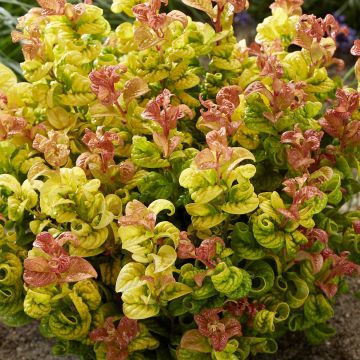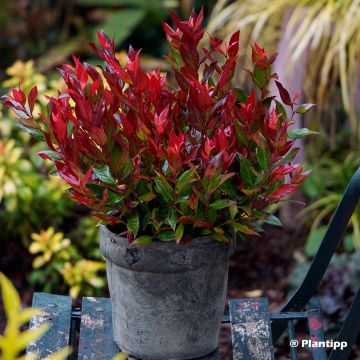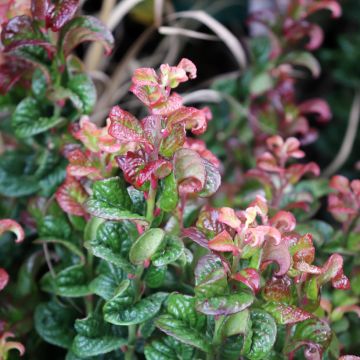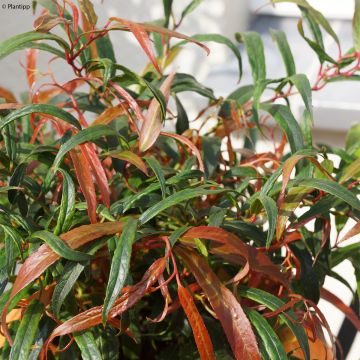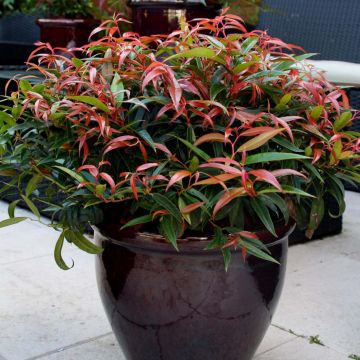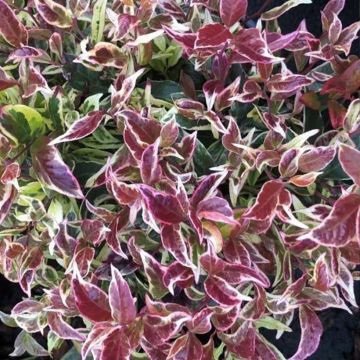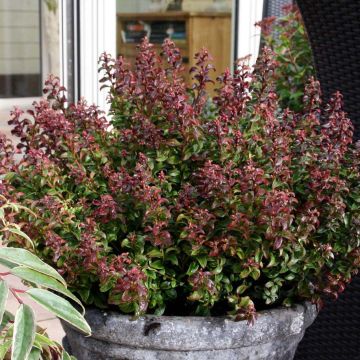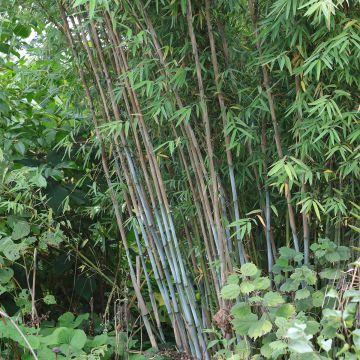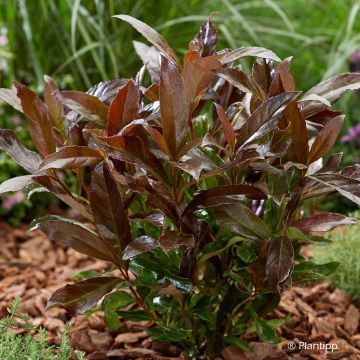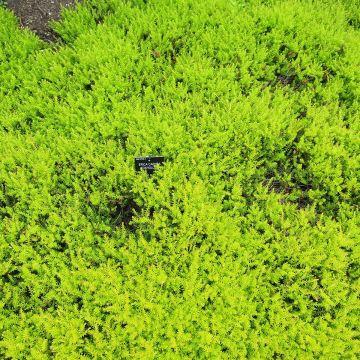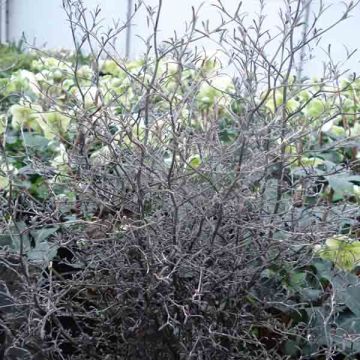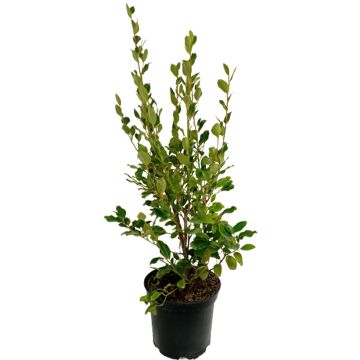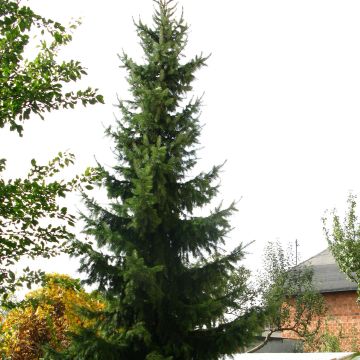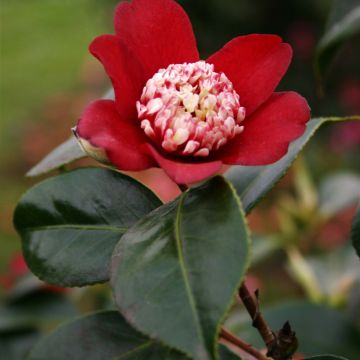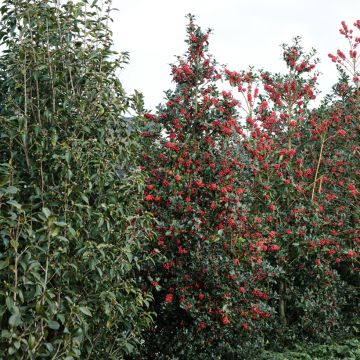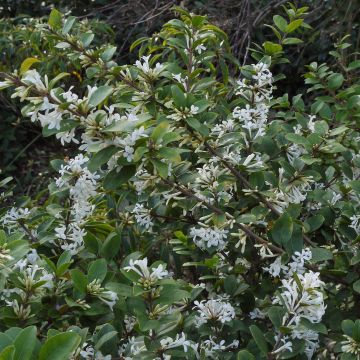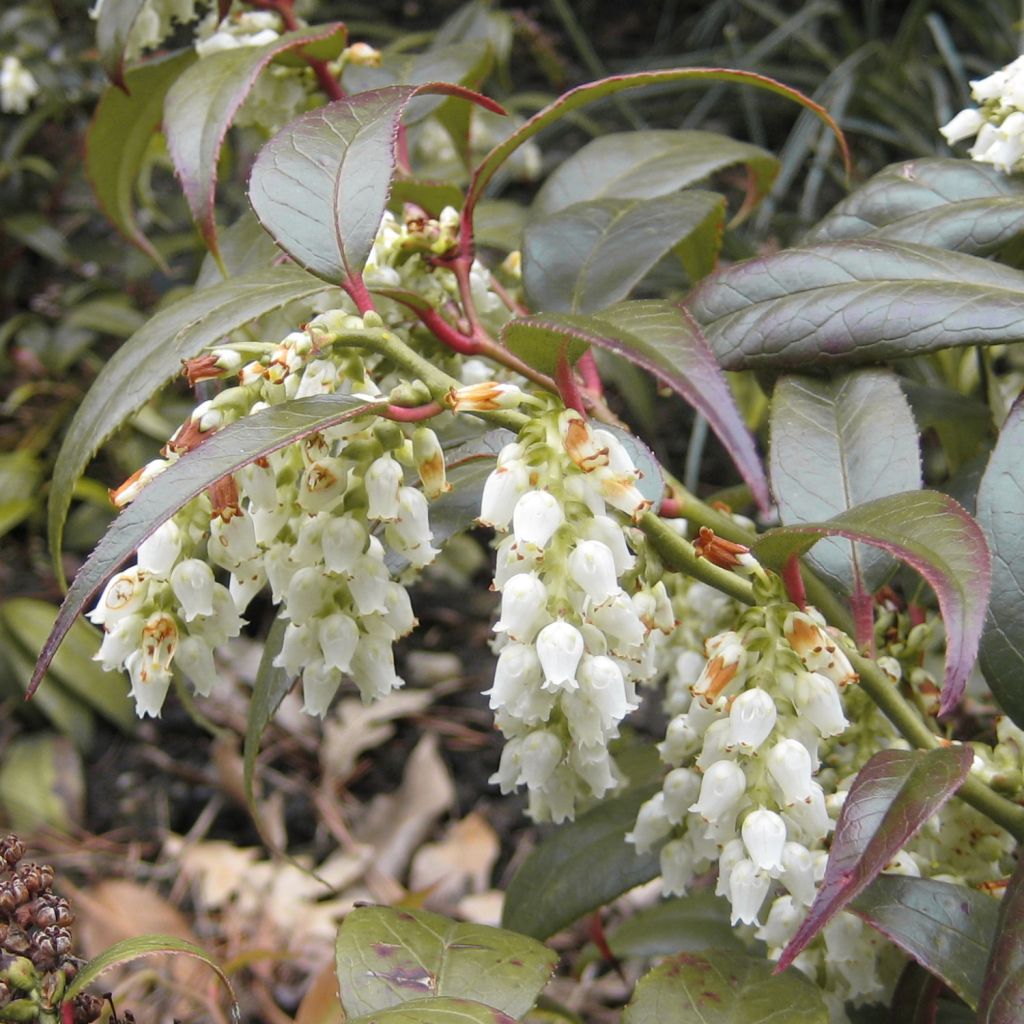

Leucothoe fontanesiana Scarletta
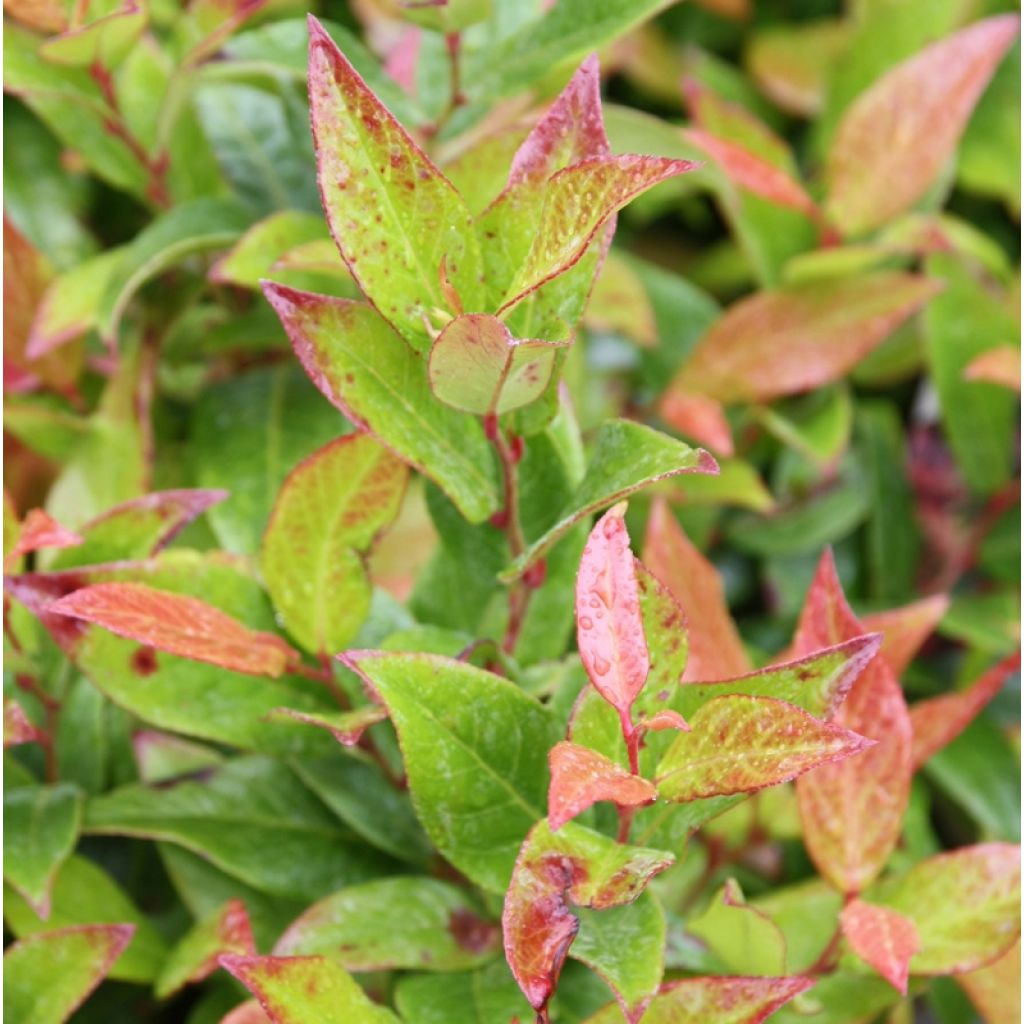

Leucothoe fontanesiana Scarletta
Leucothoe fontanesiana Scarletta
Leucothoe fontanesiana Scarletta (Zeblid)
Drooping Leucothoe, Highland Doghobble, Fetter-bush
Very lovely young plant, arrived well protected. Beautiful foliage, I can't wait to see it flower!
Nathalie, 13/05/2021
This item cannot be shipped to the selected country
Delivery charge from €5.90
More information
Schedule delivery date,
and select date in basket
This plant carries a 24 months recovery warranty
More information
We guarantee the quality of our plants for a full growing cycle, and will replace at our expense any plant that fails to recover under normal climatic and planting conditions.
From €5.90 for pickup delivery and €6.90 for home delivery
Express home delivery from €8.90.

Does this plant fit my garden?
Set up your Plantfit profile →
Description
Unjustly overlooked, Leucothoe fontanesiana 'Scarletta' is a small bush. It is easy to grow in light and acidic soils in partial shade. Its naturally rounded habit and foliage in shades of green, red-purple, and bronze in winter give it a certain elegance that suits many garden styles.
Leucothoe fontanesiana is an evergreen bush that grows in a regular ball shape. Its growth is quite slow and therefore requires little or no pruning. When mature, it reaches a maximum height and width of 1.50 m (3.3 ft). It thrives in light and humus-rich soils with an acidic pH, in shade or partial shade, and sheltered from the wind. It is very hardy and can withstand temperatures down to -20° C (-4° F) at least. In May, it produces numerous clusters of white bell-shaped flowers distributed along the stems, reminiscent of the flowering of its cousins, Pieris or andromedas.
The Scarletta variety has elongated, thick-textured, dark green leaves edged with red when young in spring. The foliage then takes on an intense red-purple colour with the winter cold. It can be used at the front of shrub borders, with hydrangeas, for example, or other acid-loving plants. Its moderate growth and rounded, compact habit also make it suitable for containers to fill a less sunny spot on a terrace or balcony.
With its striking appearance, this cousin of heathers and rhododendrons (Ericaceae family) can be used as a topiary substitute. Although it originates from the moist forests of the Appalachian Mountains in the eastern United States, it can find its place in a Zen or Japanese-inspired garden, a contemporary garden, or even in a French-style garden with a modern twist, where it will provide an evolving decorative presence throughout the year.
Report an error about the product description
Leucothoe fontanesiana Scarletta in pictures
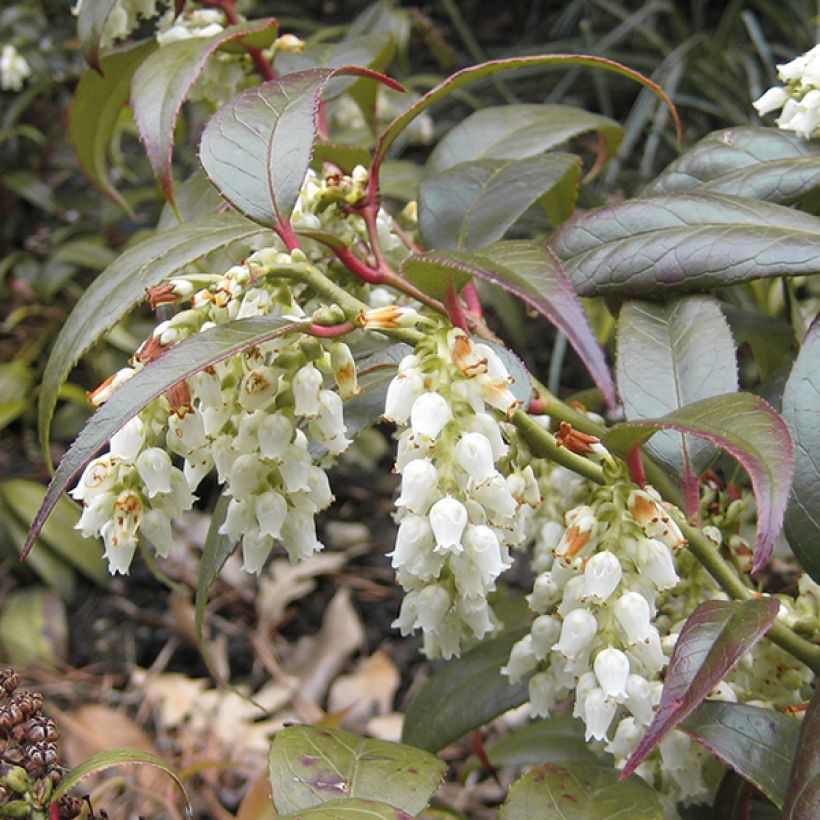

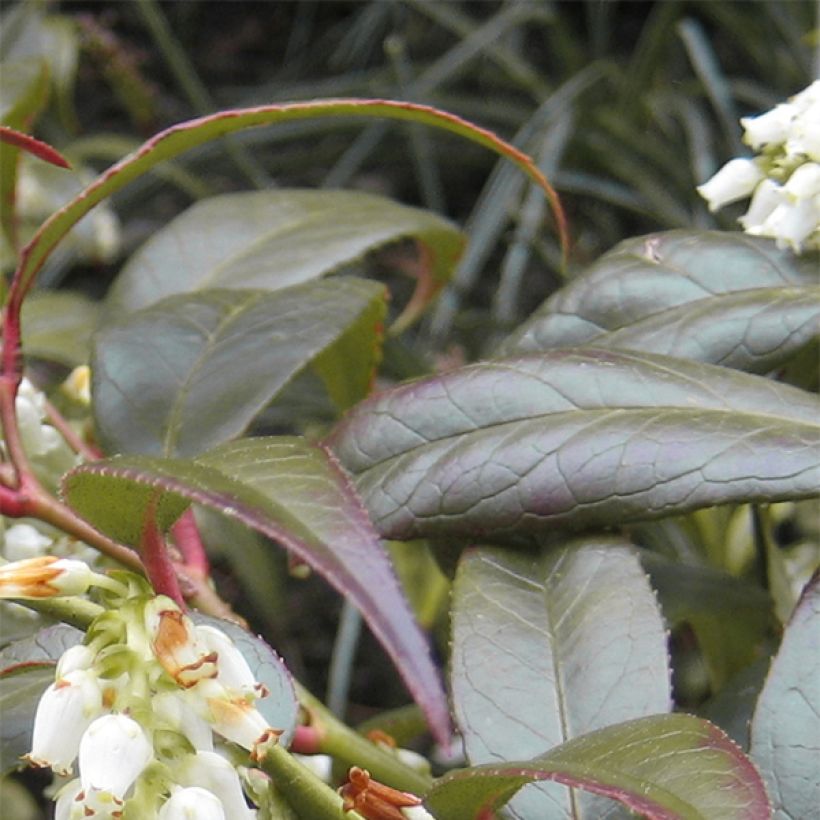

Plant habit
Flowering
Foliage
Botanical data
Leucothoe
fontanesiana
Scarletta (Zeblid)
Ericaceae
Drooping Leucothoe, Highland Doghobble, Fetter-bush
Cultivar or hybrid
Other Leucothoe
Planting and care
Choose a shady or semi-shady location for it, sheltered from drafts. Its winter colouration will be more beautiful if it is not planted in complete shade. The soil must be completely free of limestone. In heavy or neutral soil, it will particularly appreciate an addition of ericaceous soil mixed with the soil from your garden, without forgetting to supplement with a good organic fertiliser (for example, crushed horn, dried blood).
Planting period
Intended location
Care
-
, onOrder confirmed
Reply from on Promesse de fleurs
Evergreen shrubs
Haven't found what you were looking for?
Hardiness is the lowest winter temperature a plant can endure without suffering serious damage or even dying. However, hardiness is affected by location (a sheltered area, such as a patio), protection (winter cover) and soil type (hardiness is improved by well-drained soil).

Photo Sharing Terms & Conditions
In order to encourage gardeners to interact and share their experiences, Promesse de fleurs offers various media enabling content to be uploaded onto its Site - in particular via the ‘Photo sharing’ module.
The User agrees to refrain from:
- Posting any content that is illegal, prejudicial, insulting, racist, inciteful to hatred, revisionist, contrary to public decency, that infringes on privacy or on the privacy rights of third parties, in particular the publicity rights of persons and goods, intellectual property rights, or the right to privacy.
- Submitting content on behalf of a third party;
- Impersonate the identity of a third party and/or publish any personal information about a third party;
In general, the User undertakes to refrain from any unethical behaviour.
All Content (in particular text, comments, files, images, photos, videos, creative works, etc.), which may be subject to property or intellectual property rights, image or other private rights, shall remain the property of the User, subject to the limited rights granted by the terms of the licence granted by Promesse de fleurs as stated below. Users are at liberty to publish or not to publish such Content on the Site, notably via the ‘Photo Sharing’ facility, and accept that this Content shall be made public and freely accessible, notably on the Internet.
Users further acknowledge, undertake to have ,and guarantee that they hold all necessary rights and permissions to publish such material on the Site, in particular with regard to the legislation in force pertaining to any privacy, property, intellectual property, image, or contractual rights, or rights of any other nature. By publishing such Content on the Site, Users acknowledge accepting full liability as publishers of the Content within the meaning of the law, and grant Promesse de fleurs, free of charge, an inclusive, worldwide licence for the said Content for the entire duration of its publication, including all reproduction, representation, up/downloading, displaying, performing, transmission, and storage rights.
Users also grant permission for their name to be linked to the Content and accept that this link may not always be made available.
By engaging in posting material, Users consent to their Content becoming automatically accessible on the Internet, in particular on other sites and/or blogs and/or web pages of the Promesse de fleurs site, including in particular social pages and the Promesse de fleurs catalogue.
Users may secure the removal of entrusted content free of charge by issuing a simple request via our contact form.
The flowering period indicated on our website applies to countries and regions located in USDA zone 8 (France, the United Kingdom, Ireland, the Netherlands, etc.)
It will vary according to where you live:
- In zones 9 to 10 (Italy, Spain, Greece, etc.), flowering will occur about 2 to 4 weeks earlier.
- In zones 6 to 7 (Germany, Poland, Slovenia, and lower mountainous regions), flowering will be delayed by 2 to 3 weeks.
- In zone 5 (Central Europe, Scandinavia), blooming will be delayed by 3 to 5 weeks.
In temperate climates, pruning of spring-flowering shrubs (forsythia, spireas, etc.) should be done just after flowering.
Pruning of summer-flowering shrubs (Indian Lilac, Perovskia, etc.) can be done in winter or spring.
In cold regions as well as with frost-sensitive plants, avoid pruning too early when severe frosts may still occur.
The planting period indicated on our website applies to countries and regions located in USDA zone 8 (France, United Kingdom, Ireland, Netherlands).
It will vary according to where you live:
- In Mediterranean zones (Marseille, Madrid, Milan, etc.), autumn and winter are the best planting periods.
- In continental zones (Strasbourg, Munich, Vienna, etc.), delay planting by 2 to 3 weeks in spring and bring it forward by 2 to 4 weeks in autumn.
- In mountainous regions (the Alps, Pyrenees, Carpathians, etc.), it is best to plant in late spring (May-June) or late summer (August-September).
The harvesting period indicated on our website applies to countries and regions in USDA zone 8 (France, England, Ireland, the Netherlands).
In colder areas (Scandinavia, Poland, Austria...) fruit and vegetable harvests are likely to be delayed by 3-4 weeks.
In warmer areas (Italy, Spain, Greece, etc.), harvesting will probably take place earlier, depending on weather conditions.
The sowing periods indicated on our website apply to countries and regions within USDA Zone 8 (France, UK, Ireland, Netherlands).
In colder areas (Scandinavia, Poland, Austria...), delay any outdoor sowing by 3-4 weeks, or sow under glass.
In warmer climes (Italy, Spain, Greece, etc.), bring outdoor sowing forward by a few weeks.


































